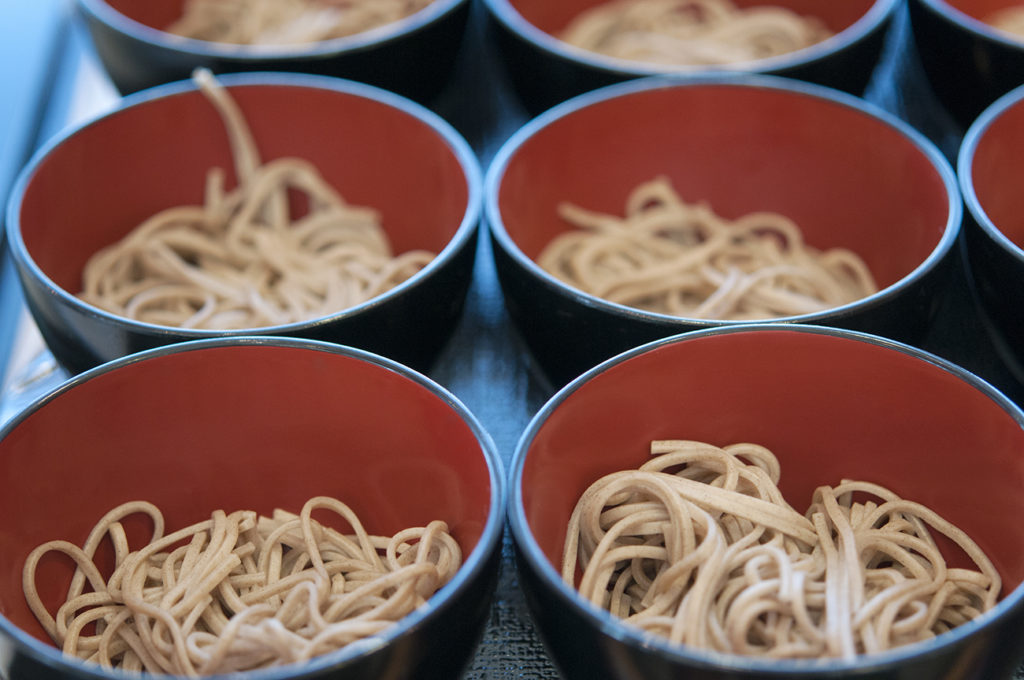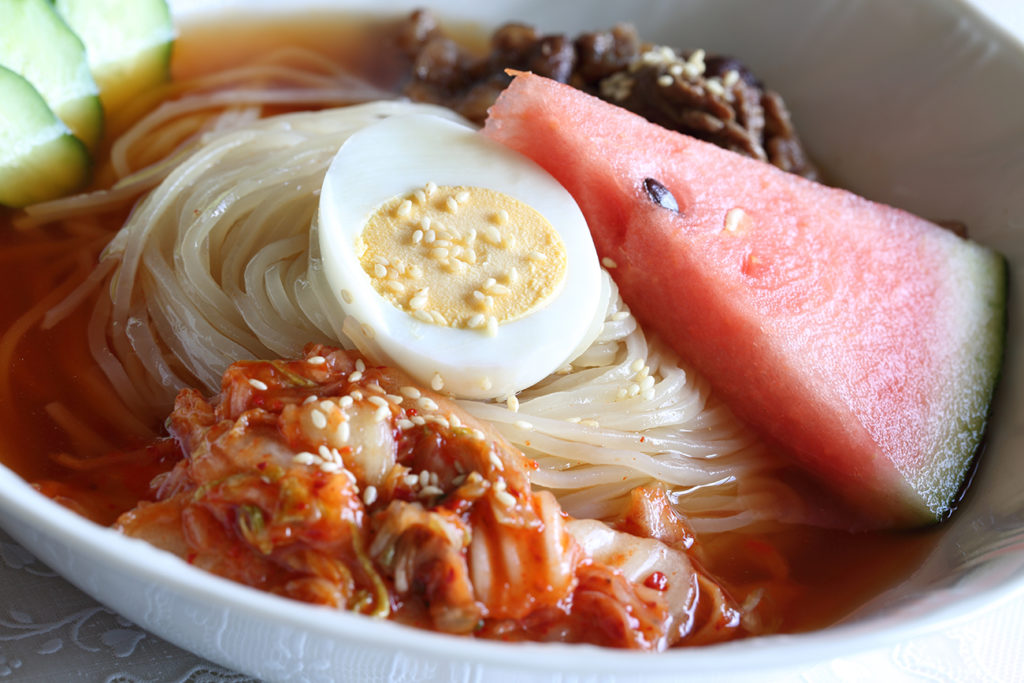
The Three Great Noodles of Morioka
Morioka (盛岡), capital of Iwate Prefecture in the Tohoku region of Japan is about two and a half hours by shinkansen north of Tokyo. The area is surrounded by mountains on three sides and has several rivers that runs through it. Morioka throughout history, has continuously been inhabited since the Japanese Paleolithic period. Many Jōmon, Yayoi and Kofun period tombs and remains have been discovered in the area.
After one of Japan’s historical battles, the Battle of Sekigahara in 1600 when Morioka Domain was formally recognized by the Tokugawa shogunate, Kozukata Castle was renamed Morioka Castle. The Boshin War 1868-1869 of the Meiji Restoration saw Morioka Domain as a key member of the pro-Tokugawa Ōuetsu Reppan, a Japanese military-political coalition.
Morioka is not only known for its spectacular scenery and rich in history, but also to being home to “The Three Great Noodles of Morioka”! 
Wanko Soba (わんこそば) – is a popular variation on Japanese soba noodles originating from Morioka and Hanamaki in Iwate Prefecture, Japan. What makes Wanko Soba interesting is the way it is served: in small individual servings, one at a time, with your own personal server. The word Wanko can be traced from Iwate Prefecture’s regional dialect which means “bowl”—specifically, a traditional small wooden Japanese soup bowl.
 Morioka Reimen (盛岡冷麵) – is a type of cold noodle dish and is known for its chewiness, rich broth, and kimchi toppings. It is based on Korea’s noodle dish naengmyeon. The reimen noodles are made with potato starch, wheat flour and white buckwheat flour and are semi-translucent. The chewy texture of the noodles is from the extrusion process when making them. The broth is a combination of beef stock and chicken stock with soy sauce, dried shitake mushrooms and a variety of other toppings like hard boiled egg, chasu or beef, kimchi, and seasonal fruit like watermelon or apple.
Morioka Reimen (盛岡冷麵) – is a type of cold noodle dish and is known for its chewiness, rich broth, and kimchi toppings. It is based on Korea’s noodle dish naengmyeon. The reimen noodles are made with potato starch, wheat flour and white buckwheat flour and are semi-translucent. The chewy texture of the noodles is from the extrusion process when making them. The broth is a combination of beef stock and chicken stock with soy sauce, dried shitake mushrooms and a variety of other toppings like hard boiled egg, chasu or beef, kimchi, and seasonal fruit like watermelon or apple.
 Morioka Jajamen (盛岡じゃじゃ麺) – based on China’s Zhajiangmian noodles, also meaning “fried sauce noodles”. Jajamen uses thin udon noodles and is served with meat miso which is usually a combination of minced onions, pork, dried shitake mushrooms, garlic, sake, miso, vegetable oil sugar, mentsuyu, ginger, ground black sesame and sesame oil.
Morioka Jajamen (盛岡じゃじゃ麺) – based on China’s Zhajiangmian noodles, also meaning “fried sauce noodles”. Jajamen uses thin udon noodles and is served with meat miso which is usually a combination of minced onions, pork, dried shitake mushrooms, garlic, sake, miso, vegetable oil sugar, mentsuyu, ginger, ground black sesame and sesame oil.
Morioka Jajamen was said to have been brough back by Takashina Kanshou when he visited Manchukuo, now Northeast China, before WWII. Upon returning to his hometown of Morioka in 1945, he brought the dish back with him. He recreated the miso paste and incorporated various other ingredients to suit his customers tastes. The dish eventually evolved into what it is known and loved to be today.
